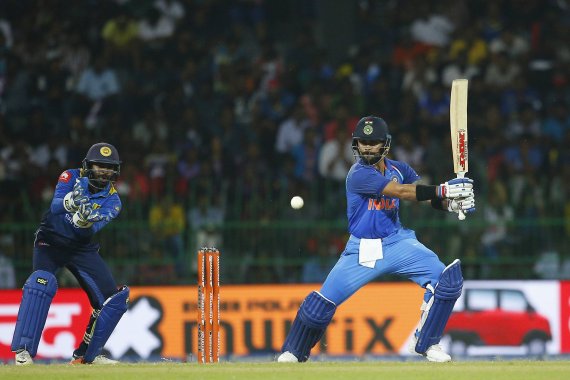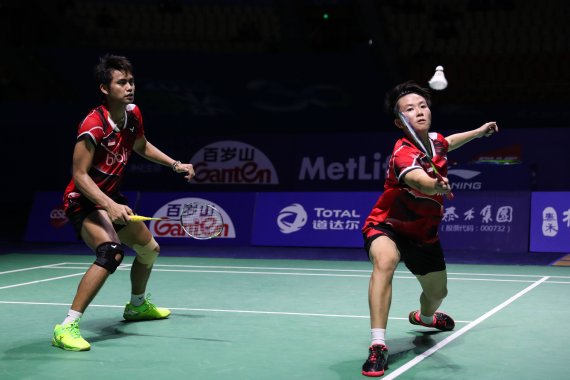
According to studies, there are three clear reasons for the boom in the Indian sports market:
- A growing middle-class
- A higher income
- And increased interest in sports events (especially since hosting the 2010 Commonwealth Games and the Cricket World Cup and Formula 1 in 2011).
The Indian government is aiming to create a broad offering of sports, also to combat increasing childhood obesity. In competitive sports, a target was set to win twenty gold medals at the 2020 Olympic Games.
Analysts consider India to be way off from that at the moment, though. The sporting goods market is mainly characterized by ball and racket sports. In 2013, cricket made the most sales in the Indian sporting goods market with around 40 billion Indian rupees (over 600 million dollars).
Harit Mehta is the director of Haren Textiles Pvt Ltd in Mumbai. It’s a family-run textile business that has also specialized in materials for sportswear and makes sales of 27 million dollars. With his years of expertise, Mehta knows the Indian sports sector and industry in depth. He established European standards for his company, in particular in the area of sustainability, and works together with Stanford University and Accenture. Furthermore, he is a scientific author for management strategies.
When people think about India and sports, they think of cricket and perhaps hockey. Is that too one-dimensional?
Harit Mehta: Cricket receives the most money, but there are many other team sports that we play in India. Soccer and hockey are on the up again. Tennis and basketball are very popular among the upper middle class, while badminton is most popular among younger people. Squash is experiencing a growing trend among young men in cities with more than 100,000 inhabitants.
Furthermore, more and more people in towns with at least 20,000 inhabitants are interested in personal fitness training and gyms. And in rural areas, wrestling, Kabaddi – a team sport with no playing equipment – and Guli Danda – a game similar to cricket and played by a lot of children who can’t afford cricket bats – are still popular.
It’s the media, really, that makes cricket what it is. But I’ll also say this: Watch out, cricket! There are a lot of people who are interested in other sports.

What are the top five sports in India? Are there statistics?
We’ve done an internal study that has shown that the biggest sports are cricket, hockey, soccer, badminton, table tennis, and tennis.
It’s also important to know that children change sports during their education. Whatever gets practiced at school isn’t necessarily the sport that will be carried on in college or later as an adult.
Fortunately, schools, particularly in medium-sized towns with between 20,000 and 100,000 inhabitants, encourage more than one sport. In total, children often have ten hours of exercise per week. Swimming is also very important in big cities. In addition, more and more soccer and hockey is being played and track and field is being practiced.
It’s important that sports are pushed and sports equipment – shoes, clothing, and accessories – are bought. That’s the key, not only for us as the industry supply chain, but also for our country.
When you think about the future of the Indian sports market, which problems need to be addressed?
Whether young or old, skilled or inexperienced, everyone who does sports must be supported – completely independent of whether they are good at it or not. Supported by their parents, by their school, and by their employer. Sport should always be for the less-educated, too. Until now, this hasn’t been the case. That needs to change, and it starts at home with every family.
Which sports businesses - with which profiles - have particularly good chances in the Indian sports market?
Many global brands are represented here. And they’ve taught the Indians that sports are fun. The government classes sports as ‘very important.’ With almost a billion young people, the opportunities are enormous to make sales here. ‘Price it right’ has to be the overriding principle for all brands, whether big or small. It’s important to deliver something that’s really good for the user.
The profile of a company that wants to invest here plays no role in that. In India, we have various climate zones, to which the sports clothing brands must adapt their offers. And companies should allow people who are interested to test out their sports equipment in the shop or outside without making them buy it. If a brand can do that, it will be successful. India is a wonderful country to do business in.

Digitization is one of the biggest issues at the moment. Is the same true for India? And what does that mean for sports business?
The pricing and manufacturing of sports equipment and clothing is very important. Regardless of age, performance and safety is very important to the average Indian athlete when practicing their sport. The brands must prove their skills and their technical ability in the manufacturing of this special sports equipment.
Digitization helps with spreading information and forces a brand to comply with the needs of the athletes. Celebrities supporting a brand won’t guarantee its success. Only good products can do that. Indians find information offline, but often buy online in order to save. If a brand is well-known and trustworthy, buying online is preferred.
We also have an interesting internal study on that: Shoppers who need to decide between two items will, 72 percent of the time, choose an item whose advantages are summarized on the packaging and was recommended by the shop assistant. This shows that both offline and online are important, and that the salesperson is an important influencing factor in India.
The outdoor industry in Europe is trying to reach out to new target groups. What’s happening with the Indian outdoor industry?
As Europe grows older, India gets younger. Sports mean more today than ever before. There are more and more small households with a maximum of one or two children. For the parents, the well-being of their children is more and more important. This is leading to a completely new generation for whom sport plays a big role, as a hobby or career.
In early years, children play a lot of team sports. The older they get, the more they tend to lean towards individual sports. The better they get, the better their sports gear. Teammates and coaches have a big influence here.
With increasing income, people switch from local, to national, and then to international brands. That results in the sporting goods industry recording a constantly growing demand. The Indian outdoor industry is aware of this development.
Is there an area that dominates the entire sports industry? And what does that mean for foreign sports companies who want to trade in India?
Ball sports are always important for Indians. Foreign sports companies must have offers for every kind of ball game.
What do foreign companies need to know if they’re interested in the Indian market?
Use your industry knowledge and your technological abilities to manufacture specific sports gear for certain sports. Use digitization to support the circulation of your brand.
Show what’s special about what you offer. Concrete, not imaginary. Sponsor a lot of small events. Be honest and show responsibility at a community level. India could be your biggest market.
Go step by step. And put long-term focus on towns with 20,000 to 100,000 inhabitants. Choose a multi-channel strategy and be patient.
What is your vision for the Indian sports market?
We can keep pace with Russia and China. We need special sports facilities for specific sports in every state. We need coaching to be professionalized. Coaches should have educational training and remember that every person is different. We should focus on the strengths of young people.
Young athletes should have the opportunity to train in big sports training facilities. My vision is an India that’s well equipped with well-manufactured and inexpensive sports gear – ‘made in India.’ Every Indian must be able to say proudly, ‘That’s the sport I play and I’m really distinguished in it.’ I would require mandatory daily sports in school.
- Awards
- Mountain sports
- Bike
- Fitness
- Health
- ISPO Munich
- Running
- Brands
- Sustainability
- Olympia
- OutDoor
- Promotion
- Sports Business
- Textrends
- Triathlon
- Water sports
- Winter sports
- eSports
- SportsTech
- OutDoor by ISPO
- Heroes
- Transformation
- Sport Fashion
- Urban Culture
- Challenges of a CEO
- Trade fairs
- Sports
- Find the Balance
- Product reviews
- Newsletter Exclusive Area
- Magazine





